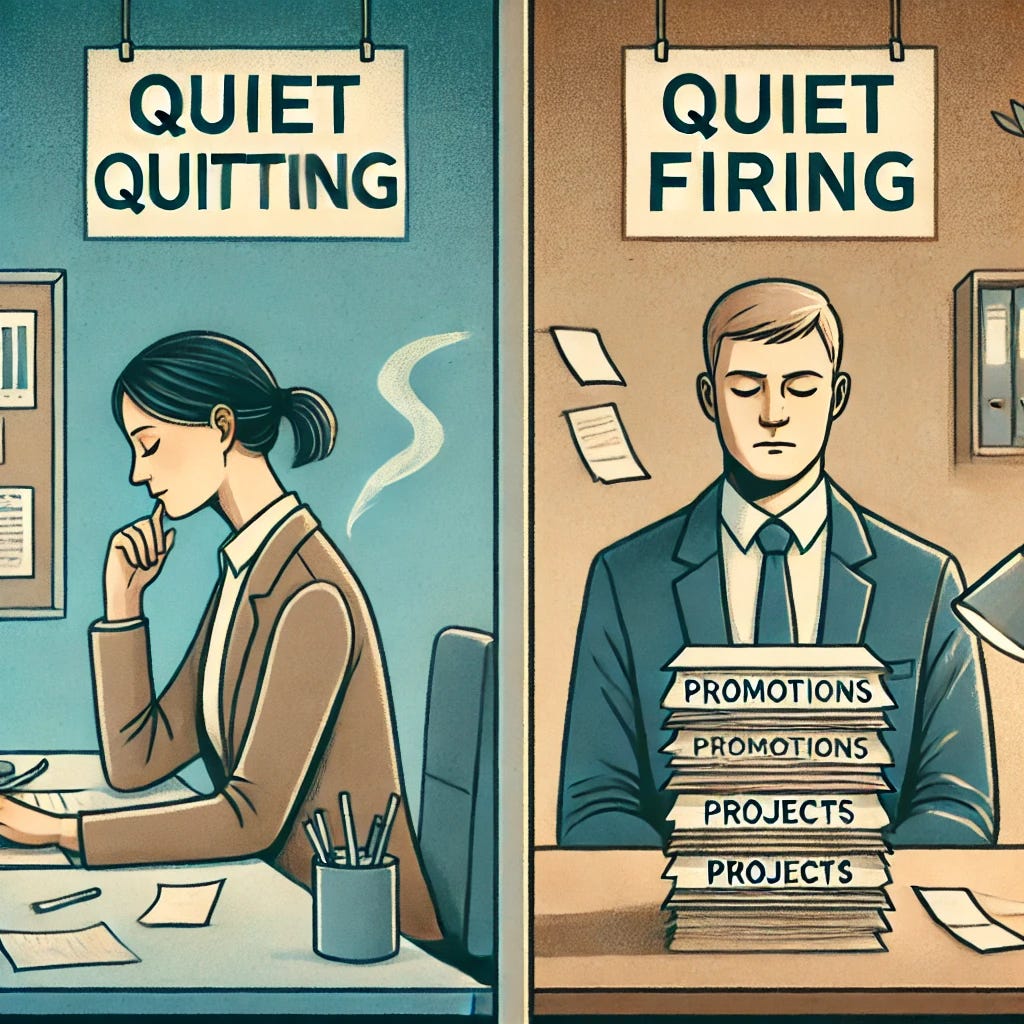Hey there, fellow navigators of the professional world,
The workplace is constantly evolving, with new trends and buzzwords emerging faster than you can say "promotion." Lately, two terms have been dominating the conversation: "quiet quitting" and "quiet firing." But what exactly do these terms mean, and what do they reveal about the current state of work?
Quiet Quitting: The Great Disengagement
Quiet quitting isn't about actually quitting your job. It's more about mentally checking out. It's doing the bare minimum, setting boundaries, and prioritizing your well-being over going above and beyond for your employer.
Think of it as a silent rebellion against hustle culture and the expectation of constant availability. It's a way of reclaiming your time and energy and redefining what work-life balance means to you.
Why are people quiet quitting?
Several factors contribute to this trend:
Burnout: The pandemic blurred the lines between work and personal life, leading to widespread burnout and a desire for greater work-life balance.
Disillusionment: Many workers feel undervalued and underappreciated, leading to a decline in motivation and engagement.
Shifting priorities: The pandemic prompted many people to re-evaluate their priorities, with a greater emphasis on personal well-being and fulfillment.
Quiet Firing: The Subtle Push
On the flip side, we have "quiet firing." This is a passive-aggressive tactic used by some employers to encourage employees to leave without actually firing them.
It might involve tactics like:
Passing over employees for promotions or raises.
Giving them less desirable assignments.
Excluding them from important meetings or decisions.
Creating a hostile or unsupportive work environment.
Essentially, it's a way of making employees feel so miserable that they eventually quit on their own.
Why do employers resort to quiet firing?
Avoiding confrontation: Some managers may find it difficult to have direct conversations about performance issues or to initiate formal termination procedures.
Cost-cutting: Quiet firing can be a way to reduce headcount without having to pay severance or unemployment benefits.
Legal concerns: In some cases, employers may fear wrongful termination lawsuits and opt for quiet firing as a less risky alternative.
Navigating the New Workplace Dynamics
Whether you're an employee or an employer, it's essential to be aware of these trends and their potential impact on the workplace.
For employees, quiet quitting might be a temporary solution to a stressful situation, but it's not a long-term strategy for career growth or fulfillment. If you're feeling disengaged, consider having an open and honest conversation with your manager about your concerns.
For employers, quiet firing is a counterproductive and unethical practice. It can damage morale, create a toxic work environment, and lead to valuable employees leaving the company. Instead, focus on open communication, constructive feedback, and creating a supportive and engaging workplace culture.
The Future of Work
These trends highlight the need for greater transparency, communication, and empathy in the workplace. As the lines between work and personal life continue to blur, it's crucial for both employees and employers to prioritize well-being, respect boundaries, and create a work environment that fosters engagement and fulfillment.
Have a good one,
Rishi Gottimukkala



